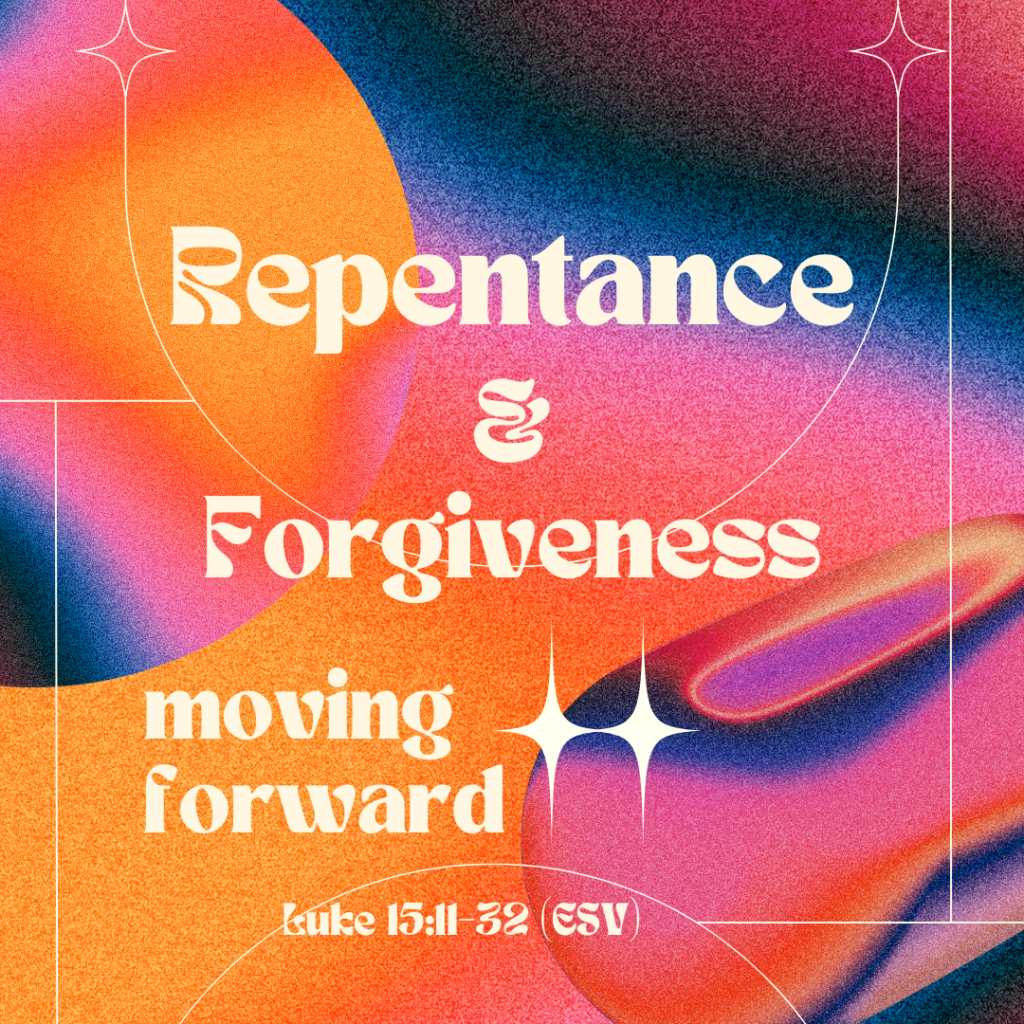Written By Lesallan
Ohio Christian University
BIB3510 Gospels: Luke (ONLF23)
Professor Daniel Rickett
September 12, 2023

Luke 15:11-32 (ESV): Forgiveness and Repentance
Reflections on the major insights gained from Luke 15:11–32 (ESV) Detailed Analysis:
This parable’s literary devices and elements (Luke 15:11-32, ESV) accentuate the importance of forgiveness and repentance.
The narrative of Luke 15:11-32 (ESV) employs several literary devices, including parables and contrasts, to convey its message. The parable of the prodigal son, in particular, uses a short story to illustrate a moral or spiritual lesson. Through this narrative, we learn about God’s grace and forgiveness and the human responses of repentance and resentment. Meanwhile, the contrast between the characters and celebrations in the story highlights themes such as sin and redemption, justice and mercy, and joy and sorrow. This contrast also creates tension and suspense, as we wonder how the father will react to his sons’ actions and attitudes.
This story beautifully weaves figurative language to convey a moral lesson that inspires forgiveness and redemption. The use of symbolism through the characters and background reflects upon the Biblical teaching of forgiving sinners after repentance. The story’s main plot centers around two sons, and the characterization of the prodigal son, elder son, and father is significant in conveying the moral lesson. The irony in this story is that the younger son who was lost is found, while the elder son who was always with his father is lost. This parable of the prodigal son contains various literary elements that inspire us to learn from its moral lesson.
This parable of the prodigal son (Luke 15:11-32, ESV) emphasizes the importance of forgiveness and repentance in one’s life.
The parable of the prodigal son is a narrative that Jesus employed to depict the love and mercy of God towards sinners. The story centers around a younger son who implores his father for his share of the inheritance but then wastes it in a far-off land, leading to poverty and misery. He eventually returns to his father and begs for forgiveness. Much to his astonishment, his father welcomes him with joy and celebration, whereas his older brother, who remained faithful to his father, becomes resentful and angry. The parable serves to highlight that God is always willing to forgive those who repent and return to Him, regardless of how far they may have strayed. Moreover, it reminds us that we should not be envious or critical of those who receive God’s grace, but instead, we ought to join in their rejoicing. The story underscores the significance of forgiveness and repentance in our personal lives, as they serve as the primary means of mending our relationship with God and with others.
The parable of the prodigal son (Luke 15:11-32, ESV) illustrates the power of God’s grace and mercy in restoring a broken relationship.
The younger son, who squandered his inheritance in a reckless lifestyle, returns to his father with a humble and contrite heart. The father, who had been waiting and longing for his son’s return, welcomes him with open arms and celebrates his recovery. The older son, who had remained faithful and obedient, struggles to accept his brother’s restoration and resents his father’s generosity. The father reassures him of his love and invites him to join the celebration. This parable teaches us that God is ready to forgive and restore anyone who comes to Him in repentance, and that we should also forgive and rejoice with those who have been reconciled to God.
This parable (Luke 15:11-32, ESV) reflects upon the love of God for wayward human beings.
The parable of the prodigal son illustrates God’s love for wayward humans and highlights several key points. Firstly, it demonstrates that God is always willing to welcome back those who repent and return to Him. The father in the story embraces his son who had squandered his inheritance and lived a sinful life, just as God embraces His repentant children. Second, it shows that God is generous and gracious, not holding grudges or demanding repayment, but celebrating the restoration of the lost, just as the father in the story threw a feast for his son who had come back. Third, it shows that God is compassionate and patient, not forcing anyone to love Him or obey Him, but giving them freedom and time to make their own choices, just as the father in the story did not interfere with his son’s decision to leave or return. Fourth, it shows that God is forgiving and merciful, not condemning or punishing those who have sinned, but offering them forgiveness and mercy, just as the father in the story did not reproach his son for his mistakes or failures. Fifth, it shows that God is loving and always faithful, not favoring one over another, but loving all His children equally and faithfully, just as the father in the story assured his older son that he was always with him and everything he had was his.
The parable found in Luke 15:11-32 (ESV) utilizes figurative analysis and deliberate characterization to communicate its moral message and central theme in a highly effective manner.
This parable uses figurative language, imagery, and characterization to convey its moral lesson and central theme. The father represents God, who is compassionate and merciful to sinners who repent and return to Him. The younger son represents the sinners who wander away from God and experience the consequences of their choices. The older son represents the self-righteous who think they deserve God’s favor and judge others harshly. The feast represents the joy of salvation and the celebration of heaven over every sinner who repents. The parable teaches that God’s grace is available to everyone, regardless of their past, and that we should not be envious or bitter when others receive it.
The three main characters in the story represent different aspects of the human condition and the divine response. The prodigal son represents the sinner who rebels against God and squanders his inheritance but eventually comes to his senses and returns to his father with repentance. The elder son represents the self-righteous person who obeys God outwardly, but harbors resentment and bitterness in his heart, and refuses to rejoice when his brother is restored. The father represents God himself, who is compassionate and merciful, and welcomes back his lost son with joy and celebration. The moral lesson of the parable is that God’s love is not based on our performance or merit, but on his grace and mercy. He is ready to forgive anyone who comes to him with a humble and contrite heart, and he invites us to share in his joy over the salvation of the lost.
The irony in this narrative (Luke 15:11-32, ESV) is that the younger son who was lost is found, while the elder son who was always with his father is lost.
The irony in this story is that the younger son, who rebelled against his father and wasted his inheritance, experienced repentance and forgiveness, while the elder son, who obeyed his father and stayed faithful, harbored resentment and bitterness. The younger son realized his sin and humbled himself before his father, who welcomed him back with joy and celebration. The elder son, however, refused to join the feast and accused his father of being unfair and unjust. The younger son was lost but found, while the elder son was always with his father but lost.
Blessings,
Lesallan


